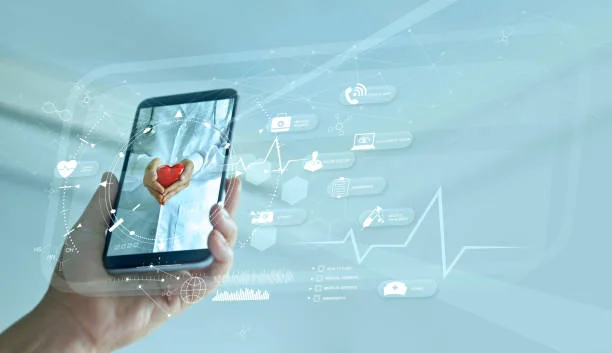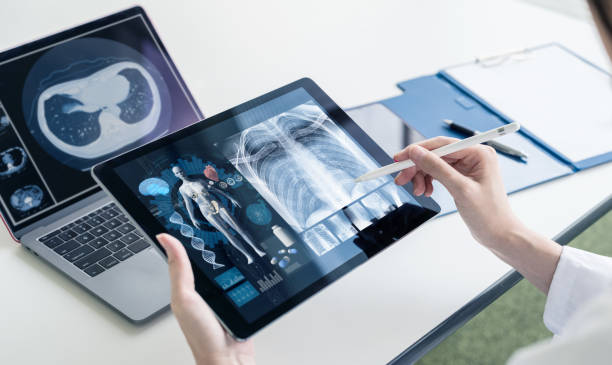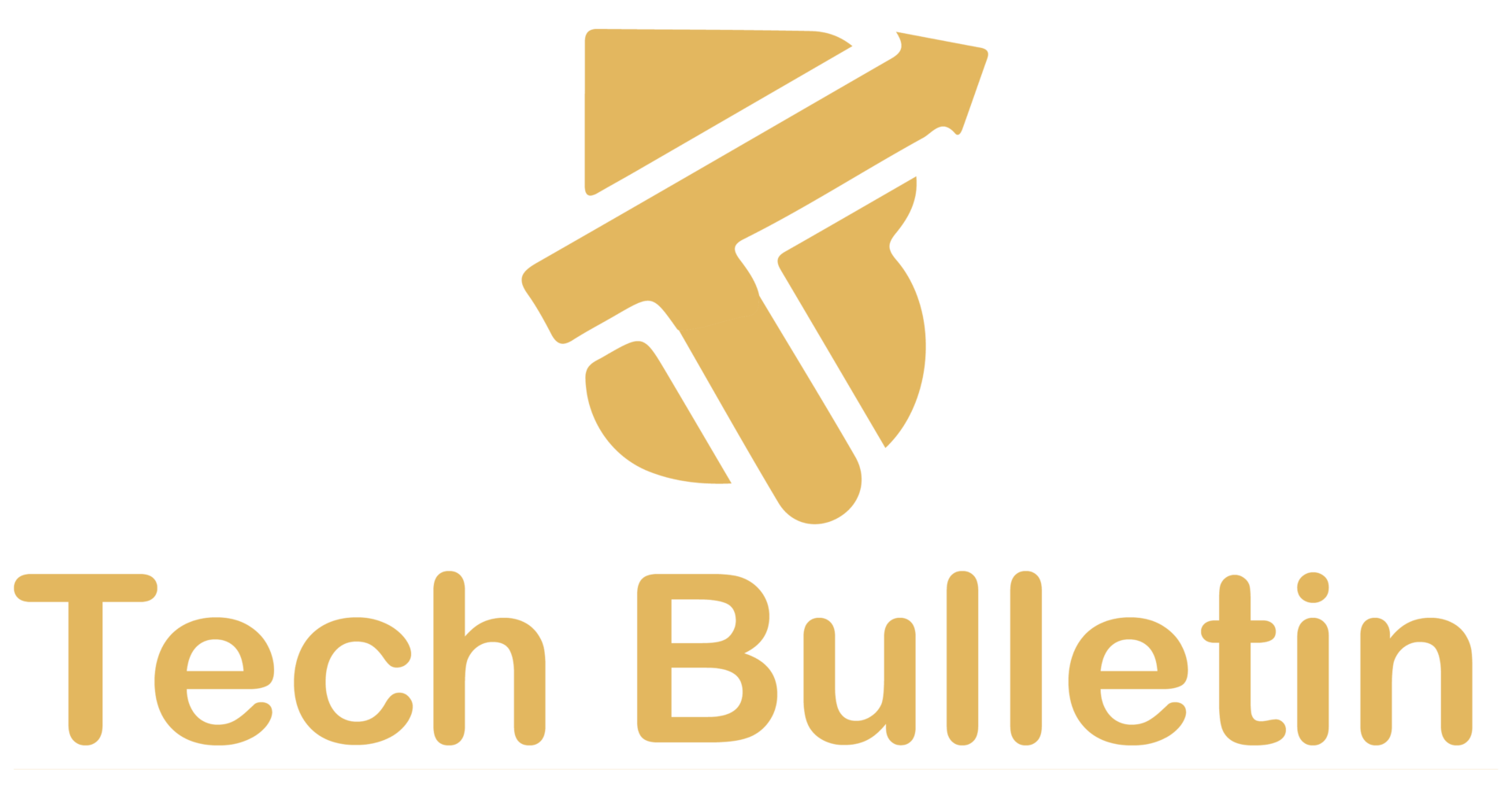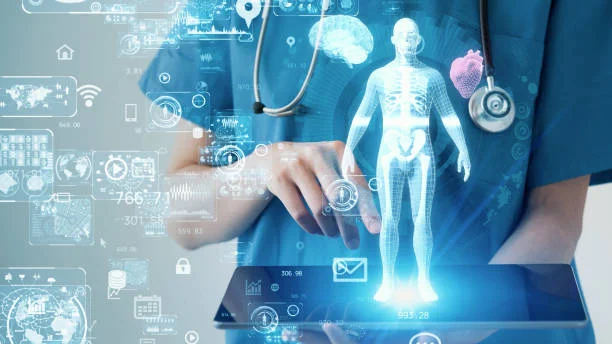5 Different Types of Software Used in the Healthcare Industry (With Real-World Examples)

When you walk into a modern clinic or hospital, you’re entering a tech-savvy world where software plays a pivotal role in delivering care. Gone are the days of dusty filing cabinets and handwritten notes; today, healthcare runs on code. From keeping detailed patient histories to enabling video consultations and even analyzing X-rays, specialized software solutions are transforming every facet of medical care.
We have 5 different types of software used in the healthcare industry, each with a real-world example to help you understand how these tools function in actual clinical settings. Whether you’re a healthcare provider, medical student, tech enthusiast, or just someone curious about the systems behind modern medicine, this guide is for you.
5 Different Types Of Software Used in the Healthcare Industry

1. Electronic Health Records (EHR) Software
Electronic Health Records (EHR) software has revolutionized how patient information is stored, accessed, and managed. Instead of maintaining stacks of paper files, healthcare professionals now use digital platforms to record, update, and share patient health data securely. These digital records include medical history, diagnoses, medications, treatment plans, immunization dates, allergies, radiology images, and lab results.
EHRs are different from EMRs (Electronic Medical Records) in that they go beyond the data collected in a single provider’s office. They are designed to share information with other healthcare providers and organizations, such as laboratories, specialists, and medical imaging facilities, so they contain information from all the clinicians involved in a patient’s care.
Key Features of EHR Systems
- Centralized Patient Data: All medical history and clinical documentation in one place.
- Interoperability: Allows seamless data sharing across different systems and providers.
- Clinical Decision Support: Offers alerts, reminders, and evidence-based tools to enhance diagnosis and treatment.
- Patient Portals: Patients can access their records, schedule appointments, and communicate with doctors.
- e-Prescribing: Enables direct electronic prescription transmission to pharmacies.
Real-World Example: Epic Systems
Epic Systems is one of the largest and most widely used EHR platforms globally. Hospitals like the Cleveland Clinic and the Mayo Clinic rely on Epic for managing their patient records. Its extensive suite of modules covers every aspect of patient care and administration, and it supports deep analytics, scheduling, and revenue cycle management. What makes Epic stand out is its usability, robust features, and strong commitment to data security and compliance with regulations like HIPAA.
2. Medical Imaging Software

Medical imaging software plays a critical role in diagnosing and treating patients by allowing physicians to view detailed internal visuals of the human body. These images can include X-rays, MRIs, CT scans, PET scans, and ultrasounds. Traditionally, these images were developed and stored on film, but digital imaging software now enables instant viewing, manipulation, and sharing of these images.
This software not only stores high-resolution images but also integrates with PACS (Picture Archiving and Communication Systems) and RIS (Radiology Information Systems), ensuring smooth workflow from image acquisition to diagnosis and treatment planning.
Key Features and Benefits
- 3D Reconstruction: Allows creation of three-dimensional models from two-dimensional images.
- Advanced Visualization Tools: Zoom, rotate, and color-code specific tissues or organs.
- Integration with EHRs: Seamless data flow between patient records and imaging results.
- Remote Access: Enables radiologists to access and analyze images from different locations.
- AI-Powered Diagnostics: Machine learning algorithms assist in detecting abnormalities like tumors, fractures, or organ anomalies.
Real-World Example: GE Healthcare Centricity
GE Healthcare’s Centricity Imaging software is a robust platform used in hospitals worldwide. It streamlines the radiology workflow by offering features like image analysis, voice recognition for reporting, and cloud-based storage. Centricity also supports AI algorithms that assist radiologists in detecting issues faster and with greater accuracy, helping reduce diagnosis time and improving patient outcomes.
3. Hospital Management Systems (HMS)

Hospital Management Systems (HMS) are comprehensive software solutions designed to manage every operational aspect of a hospital or clinic. Think of it as the central nervous system for a medical facility it handles everything from patient registration to discharge, including billing, appointment scheduling, and even inventory management.
HMS platforms help administrators streamline daily tasks, reduce paperwork, and ensure that patients receive timely and efficient care. By integrating different departments, such as outpatient, inpatient, laboratory, pharmacy, and radiology, into a single system, hospitals can function more smoothly and cohesively.
Core Functionalities
- Patient Registration and Scheduling: Automates admissions, discharges, and appointment bookings.
- Billing and Insurance Processing: Manages invoices, insurance claims, and financial reporting.
- Pharmacy and Inventory Management: Tracks medicine stock, usage, and expiration.
- Laboratory Information System (LIS): Handles test orders, results, and reporting.
- Reporting and Analytics: Offers dashboards and reports to aid decision-making and compliance.
Real-World Example: Meditech Expanse
Meditech Expanse is a widely adopted hospital management system known for its user-friendly interface and scalability. It supports everything from small clinics to large multi-specialty hospitals. Meditech’s cloud-based architecture allows remote access and real-time updates, which is especially helpful in large networks. It also integrates tightly with EHR systems, ensuring continuity of care and streamlined administrative operations.
4. Telemedicine Software

Telemedicine isn’t a new concept, but it exploded in popularity during the COVID-19 pandemic and has since become a permanent fixture in modern healthcare. Telemedicine software enables healthcare providers to consult with patients remotely via video, audio, or chat, cutting down the need for physical visits and expanding access to care, especially for rural or underserved populations.
This software is designed to ensure that virtual consultations are secure, efficient, and compliant with medical standards and privacy regulations. It often integrates with EHR and billing systems, creating a cohesive virtual care ecosystem.
Important Features in Telemedicine Tools
- Video and Audio Conferencing: High-quality, HIPAA-compliant communication tools.
- Appointment Scheduling: Patients can book, reschedule, or cancel appointments online.
- EHR Integration: Synchronizes consultation data with patient records.
- Prescription Support: Doctors can prescribe medication directly through the platform.
- Remote Monitoring Tools: Devices like blood pressure cuffs or glucose meters transmit data in real time.
Real-World Example: Teladoc Health
Teladoc Health is a global leader in virtual healthcare. Its platform connects patients with licensed doctors, therapists, dermatologists, and other specialists from their phones or computers. Teladoc’s comprehensive system supports real-time consultations, remote diagnostics, chronic condition management, and even mental health services, making it a full-spectrum telehealth solution.
5. e-Prescribing Software

e-Prescribing (Electronic Prescribing) software allows healthcare providers to write and send prescriptions directly to a patient’s pharmacy of choice, eliminating the need for handwritten scripts. This improves efficiency, reduces prescription errors, and ensures that patients receive the right medication promptly.
The software often includes features like drug interaction alerts, patient medication history, and insurance coverage checks, all of which help in prescribing the most appropriate treatment while minimizing risks.
Key Advantages for Patients and Providers
- Improved Accuracy: Reduces handwriting errors and misinterpretations.
- Drug Interaction Alerts: Warns prescribers about potential interactions or allergies.
- Faster Fulfillment: Prescriptions are sent instantly to pharmacies.
- Medication Adherence Tracking: Helps monitor whether patients are following treatment plans.
- Insurance Integration: Checks formularies and copays before sending prescriptions.
Real-World Example: DrFirst
DrFirst is one of the pioneers in e-Prescribing technology. Its platform integrates seamlessly with EHRs and pharmacy systems and is used by thousands of healthcare providers across the U.S. DrFirst goes beyond simple prescription writing—it provides real-time medication history, benefits verification, and access to discount cards, enhancing both patient safety and affordability.
Benefits of Healthcare Software Integration

1- Efficiency and Accuracy
When different healthcare software systems work together, they create a seamless and highly efficient ecosystem. Imagine the chaos of disconnected systems: a radiology department that can’t communicate with the central hospital database or a lab result that doesn’t automatically update in a patient’s chart. Software integration eliminates these pain points. It enables real-time data sharing, which significantly reduces administrative overhead and manual data entry two of the most common sources of errors in healthcare settings.
2- Enhanced Patient Care
When healthcare providers have easy access to integrated and accurate patient data, they can deliver better, more personalized care. It’s not just about speed—it’s about having a holistic view of the patient. For example, a physician can easily review a patient’s medication history, allergy information, and prior diagnoses before prescribing new treatments, significantly lowering the risk of adverse reactions.
3- Cost Reduction
While implementing integrated software systems may seem costly upfront, they save significant money in the long term. By automating billing, inventory, and patient flow management, hospitals can drastically reduce operational costs. Additionally, the reduction in manual errors lowers the risk of costly malpractice claims or insurance denials. Efficiency gains also translate into increased patient throughput, meaning more revenue without sacrificing care quality.
Challenges in Healthcare Software Adoption

1- Data Privacy and Security
Perhaps the most pressing concern in adopting healthcare software is ensuring the privacy and security of sensitive patient data. The healthcare industry is a prime target for cyberattacks due to the sheer volume and value of personal health information. Breaches can lead to identity theft, loss of trust, and substantial legal penalties.
2- High Initial Investment
The financial barrier to entry can be daunting for many hospitals, especially smaller clinics and rural facilities. Purchasing licenses, upgrading infrastructure, and training staff all contribute to high initial costs. While the long-term return on investment is typically positive, the upfront expenditure can be a significant deterrent.
Moreover, the hidden costs, like system downtime during implementation, consulting fees, and required hardware upgrades, can catch organizations off guard. Without proper planning and budgeting, healthcare providers may find themselves overwhelmed or forced to cut corners, which can jeopardize the effectiveness of the entire software system.
3- Interoperability Issues
While integration is the goal, achieving interoperability where different systems can communicate and use exchanged data effectively is still a major challenge. Many software providers use proprietary technologies that don’t play well with others, creating silos of information that hinder coordinated care.
Even with standards like HL7 and FHIR in place, real-world implementation is often inconsistent. Data formats, terminologies, and communication protocols can vary widely between systems, requiring additional middleware or customization. This not only increases complexity and cost but also undermines the very efficiency and care quality that healthcare software is meant to improve.
Key Areas Where Automation is Making an Impact
- Administrative Tasks: Appointment scheduling, patient check-ins, and billing processes are being automated to minimize human intervention. Chatbots can now handle basic queries, reschedule visits, or assist with insurance claims, improving efficiency while cutting down on wait times.
- Clinical Workflows: AI and Automation health tools ensure that lab test results are routed instantly to the relevant departments. Alerts notify doctors about critical changes in patient vitals. Some systems even suggest next steps based on evidence-based protocols.
- Inventory Management: Pharmacy and supply chain modules can track stock levels in real time, automatically reordering supplies before they run out or expire, saving both time and money.
- Revenue Cycle Management: Automation speeds up the billing process, flags potential insurance issues early, and helps hospitals recover payments faster. It can also identify coding errors or missing information before claims are submitted.
- Patient Engagement: Personalized follow-up messages, medication reminders, and post-treatment care instructions are now sent automatically via text or email, improving treatment adherence and satisfaction.
Conclusion
The healthcare industry is in the midst of a digital revolution, and software plays a pivotal role in this transformation. From managing patient records and conducting virtual consultations to diagnosing diseases through AI-powered imaging, healthcare software is redefining how care is delivered. Each type of software brings unique capabilities to the table, and when integrated properly, they create a powerful ecosystem that improves efficiency, enhances care, and reduces costs.





